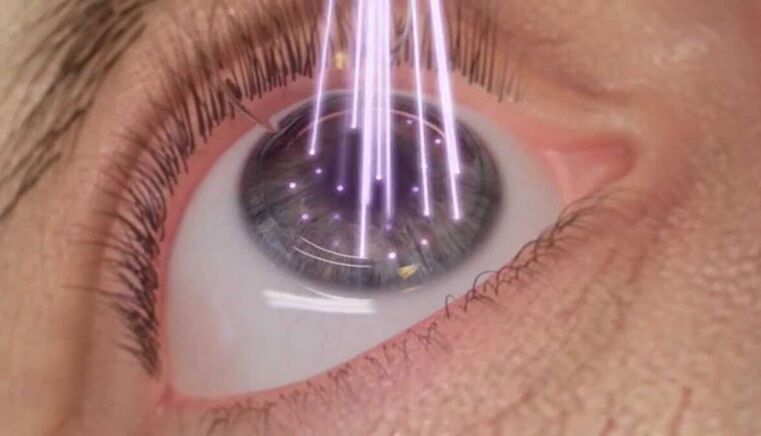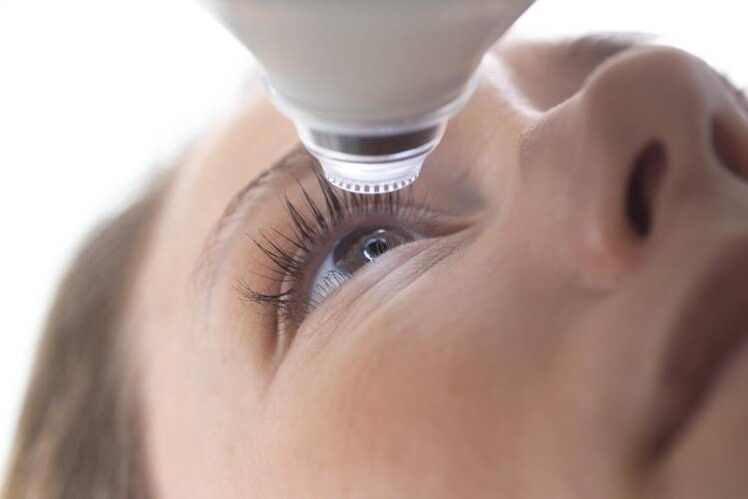Diseases of the visual system are well-corrected, but if the disease is ignored or conservative treatment does not yield the desired results, surgery is recommended to restore vision. It allows you to eliminate pathological processes of the visual system, preserve its functionality, eliminate the possible consequences of the disease.
Modern ophthalmology offers several effective methods for restoring the functioning of the optical system, but before considering the types of ophthalmic operations it is important to know the indications for their performance, as well aspossible consequences.

When is vision recovery surgery necessary?
Operations to restore vision in ophthalmology belong to the group of refractive surgery. The main goal of such treatment is not only to preserve the function of the visual system but also to reduce dependence on contact lenses and myopia. Among the main signs of activity, several diseases can be distinguished:
- Cataract;
- glaucoma;
- keratoconus;
- myopic;
- squint eye;
- retinal atrophy;
- lens replacement;
- eye injury.
All these diseases can be treated without surgery, but only if irreversible pathological processes have not occurred in the structure of the visual system.
Types of activities
There are several methods to restore vision through surgical treatment. They all have their pros and cons, but they are sometimes seen as the only way to keep the visual system functional. Review of the most effective types of surgery to restore vision.
Laser correction
In modern ophthalmology, laser vision correction is considered the "gold standard", allowing you to restore vision with minimal risks and consequences. In the process of performing such operations, high-tech equipment is used that can correct defects in the optical system with high accuracy. Indications for laser vision correction are nearsightedness, farsightedness, and astigmatism. All these diseases are united by the common term "ametropia", which implies diseases related to the eye's ability to focus. There are several types of laser correction:
LASEK. The procedure is performed with a thin cornea, and the laser itself affects only the upper layers of the eye. During surgery, a valve is formed from the epithelium and membrane, after which it is fixed with soft lenses and removed after a few days. This type of surgery takes 5-7 minutes and the effect of the treatment can be seen as soon as the 4th day after surgery. LASEK laser vision correction is considered the only method that can be applied to children.
MASK. Basic operation to restore vision, allowing you to get rid of myopia of various degrees of complexity, as well as the early stages of astigmatism. During the operation, the laser beam penetrates the deep layers of the eyeball, changing the shape of the surface layer of the cornea and eliminating defects in the deep structures. It takes no more than 15 minutes for each eye. The disadvantage of such a surgery is the inability to predict the anatomical features of the patient's eye.
Laser vision correction surgery is very effective, but even with a high-quality procedure, after a while vision can decrease, which should be a sign of correction.

Vasectomy
Vitrectomy is performed if there is a need to remove all or part of the vitreous of the eyeball. The procedure is performed under general anesthesia. Operation can take up to 3 hours. During surgery, a small hole is made in the eye socket, through which necessary manipulations are performed.
The main indications for surgery are restoration of vision following hemorrhage or age-related retinal detachment. After surgery, complications can occur in the form of corneal edema, increased intracranial pressure, or even decreased vision. Prognosis after surgery depends on many factors, namely the extent of the pathological process, the type of restoration for vitreous replacement. With irreversible damage to the optic nerve, the effect of the operation will be absent.
Scleroplasty
Ophthalmic surgery to strengthen the outer covering of the eye (sclera). It is used not to correct vision, but to normalize the degree of myopia in at-risk patients. Eye contouring surgery is usually performed on teenagers, as the shape of the eyes changes during this period.
During surgery, special flaps are inserted behind the posterior wall of the eyeball to strengthen the sclera. More often use polymers or biological components. After a while, adhesions appear at the injection site, and after a few months, blood vessels develop into flaps, which will continue to support the work of the visual system.
Lens replacement
Such an operation is carried out with vitreous covering or other degenerative processes. Usually, indications for appointment are cataracts, glaucoma. The process of operation is quite difficult, the implant is selected individually, which will correspond to the sex, age of the patient and other features of his body.
The vitreous is replaced under local anesthesia. During the surgery, the doctor makes a small incision with a laser, then, using a special tool, he liquefies the patient's vitreous and removes it from the eye. After the procedure, the prepared graft is installed. The surgery lasted no more than 30 minutes, then stitched, the patient stayed in the clinic for a few hours, then went home.
Complications after such an operation are extremely rare. Often after that, laser vision correction is required.
Keratoplasty (replacement of the cornea)
This type of surgery is quite complicated, requiring high professionalism of the surgeon. One indication for its implementation is the treatment of congenital and acquired defects, those that manifest as a result of trauma or become the result of certain diseases.
The implementation time is not more than 30 minutes. During this procedure, the doctor removes part of the cornea with a laser or scalpel, and places the donor tissue in its place. Postoperative sutures are kept for about a year, after which special lenses are selected to reduce the risk of infection. The recovery period lasts up to 4 weeks, including frequent eye drops with antiseptic drops.
Cross link
It is prescribed for various diseases of the cornea, allows you to strengthen the ligaments and other fibers in the corneal tissues with dystrophy or keratosis. During this procedure, local anesthetic is used, then a special device is used to cut a part of the cornea, instill vitamin B2 and conduct irradiation, which strengthens the tissue by more than 200%.
In the first time after surgery, the patient wears protective glasses and has regular ophthalmology visits. If the operation is successful, the effect persists for 10 years.
Laser coagulation of the retina
Surgery to repair retinal tissue. The procedure in 70% of cases gives a positive result, and the patient herself has the opportunity to return to a normal life after a day. The surgery is performed under local anesthesia and takes no more than 20 minutes.
Before surgery, people put drops in the eyes to dilate the pupils, and wear protective glasses to let the laser light through. Due to the high temperature, cells are damaged and small vessels stick together.
Indications for the appointment of such manipulation are diseases of the retina or tumor-like processes. In some cases, after laser coagulation of the retina, inflammation and deposition of the vitreous develops, requiring further treatment.

How to prepare
If surgical treatment is indicated, the doctor will prescribe the patient a series of examinations, giving useful recommendations on the preparation for a specific procedure to eliminate the defect in the visual system. :
- One week before surgery, you should stop wearing glasses and contact lenses.
- Pass all required tests and pass the prescribed diagnostics.
- Do not drink any alcohol for 3-4 days.
- Reject cosmetics.
- Rest well, sleep well.
When you are very excited, you can use a mild sedative as recommended by your doctor.
Post-operative period
Before performing vision restoration surgery, the ophthalmologist will familiarize the patient with the rules of preparation, and the postoperative period is also considered an important period. Following a number of rules after any surgery, the risk of complications is significantly reduced, the prognosis for successful recovery is increased:
- The first 2 days you need to sleep on your back.
- During the early postoperative period, do not rub your eyes or use cosmetics.
- Before instilling the medicine in your eyes, wash your hands thoroughly.
- Rinse face with boiled and warm water, avoiding eyes.
- Eliminate prolonged or intermittent TV viewing on your computer.
- Postpone pregnancy plans for several months.
- In the first months, exclude strenuous activities, trips to the solarium, swimming pool or sauna.
- Avoid prolonged exposure to the sun.
- Avoid drinking and smoking.
- Proper and healthy nutrition.
After any surgery to restore vision, it is necessary to periodically visit an ophthalmologist, undergo the necessary examinations and use prescribed drugs. Compliance with all the rules will help to reduce the risk of possible complications, improve vision and overall health.
detect
Operations to restore vision are performed when other treatments are not giving the desired effect or the disease is raging. Therefore, to prevent severe episodes of any eye disease, it is important to visit your ophthalmologist regularly and take the necessary measures. After all, the earlier the disease is diagnosed, the better the prognosis for recovery.























